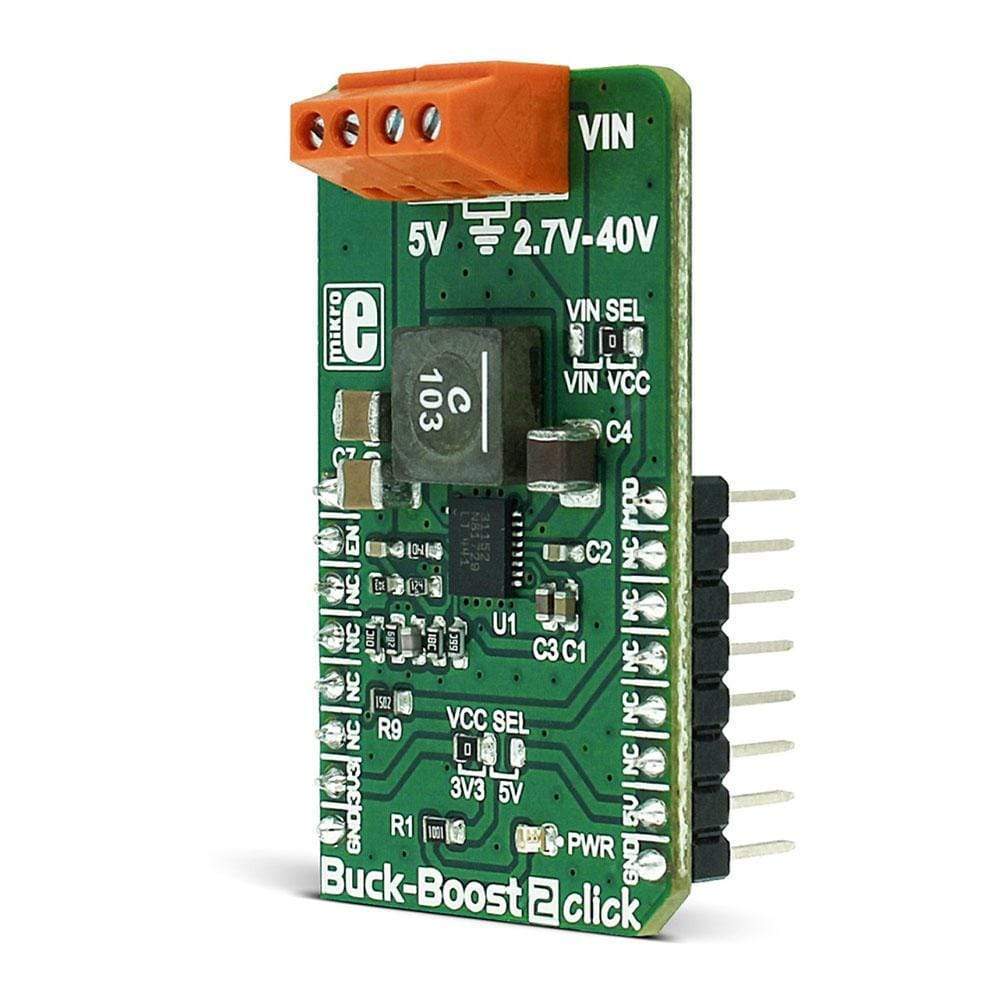
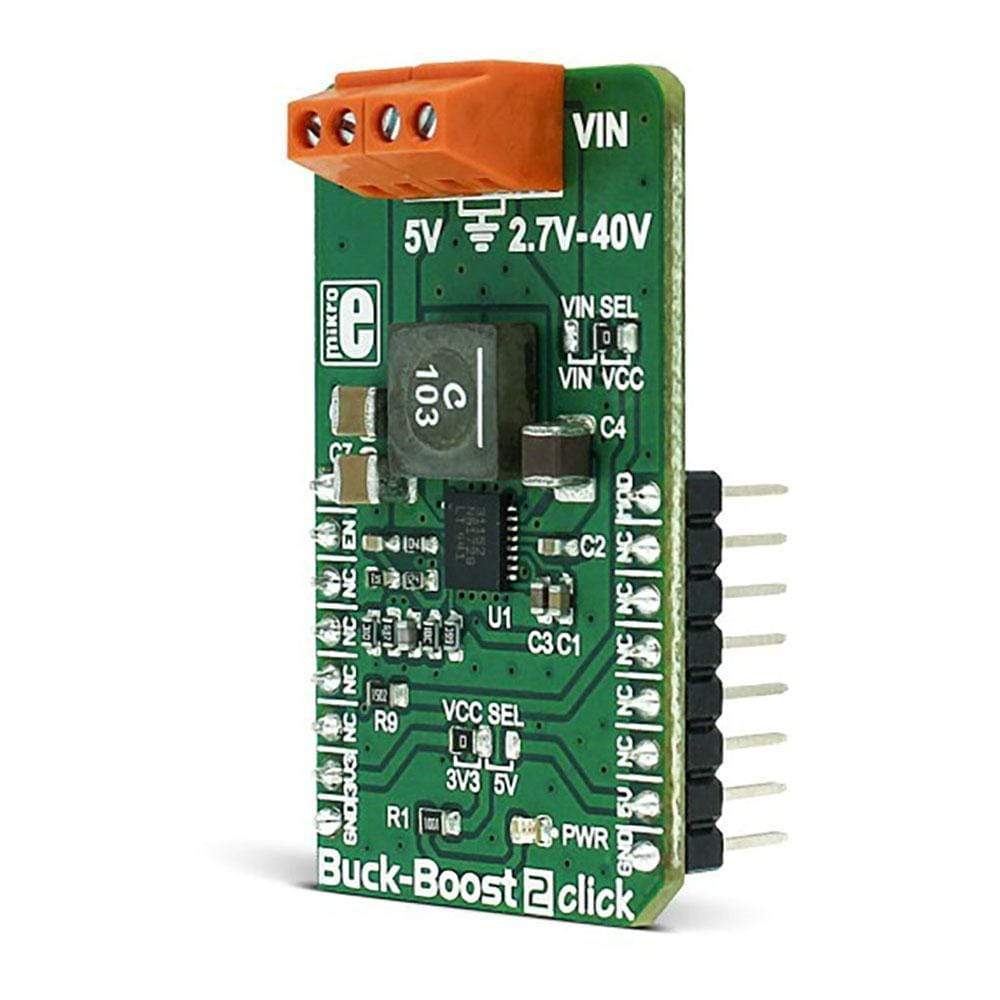
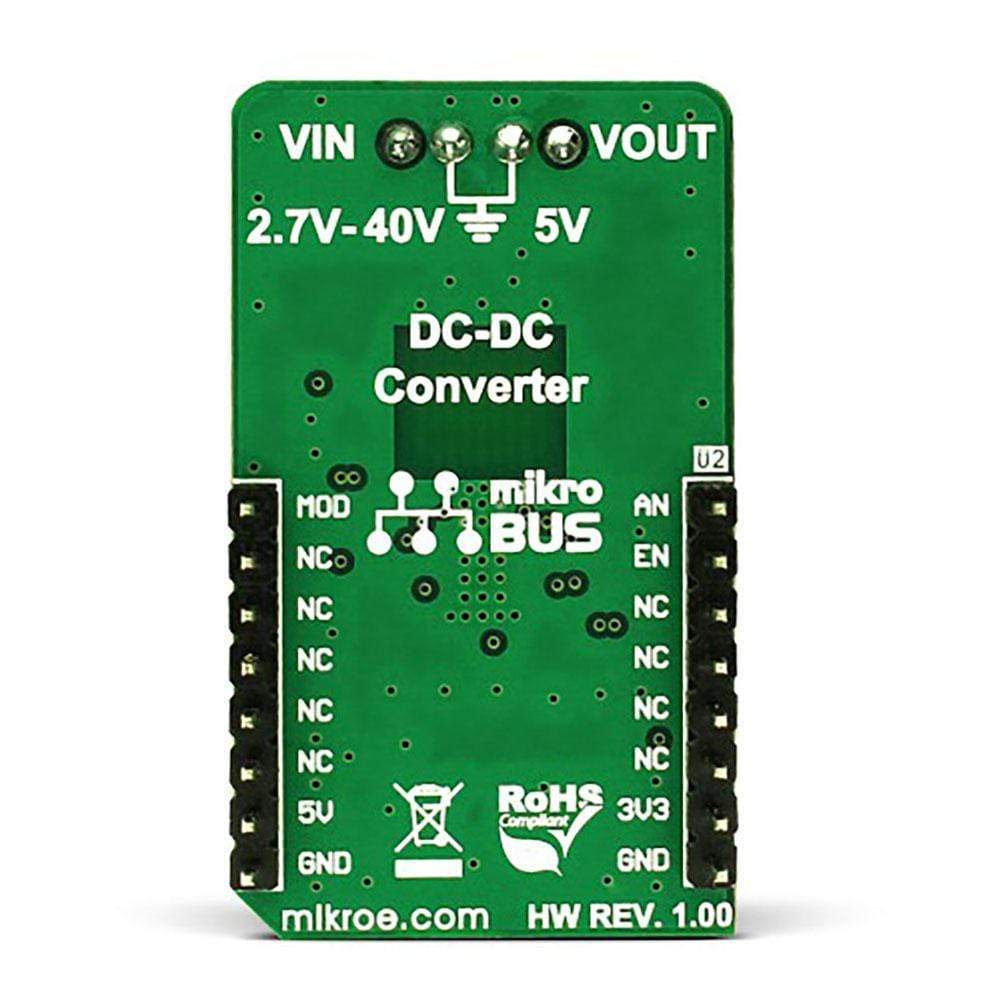
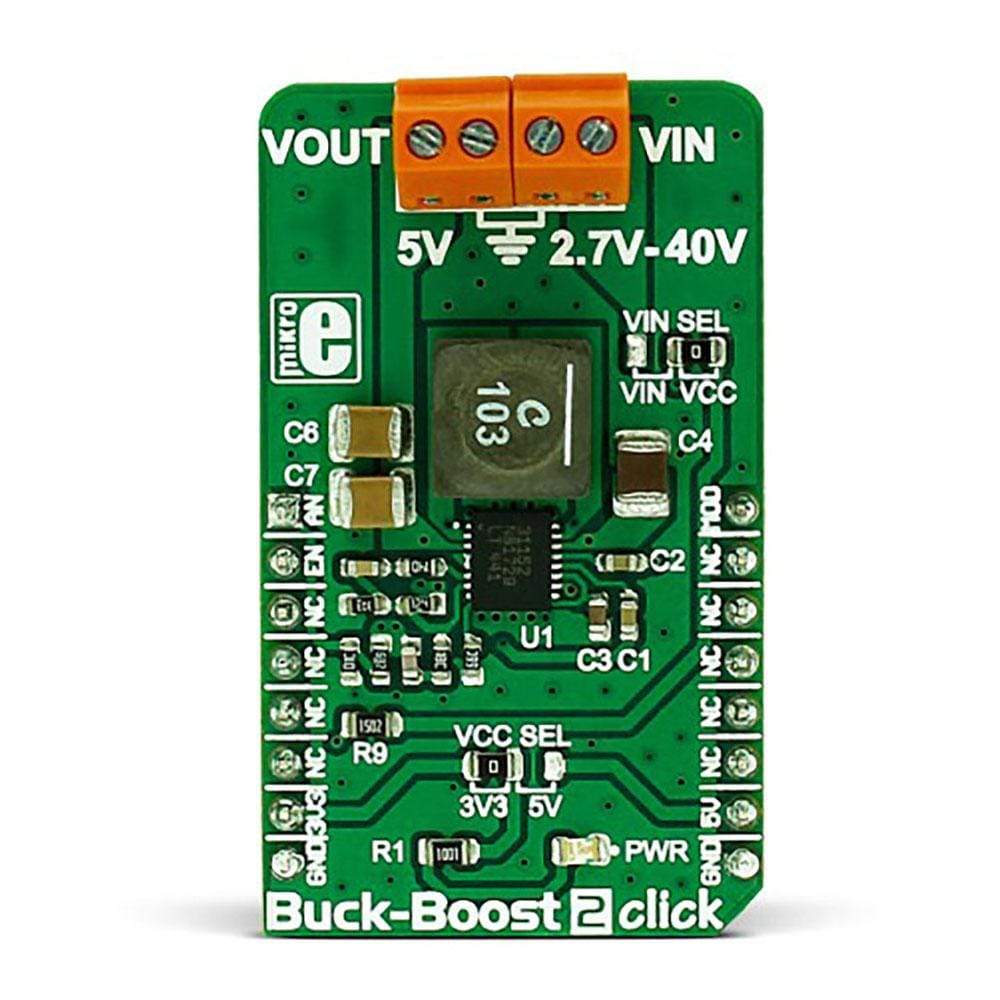
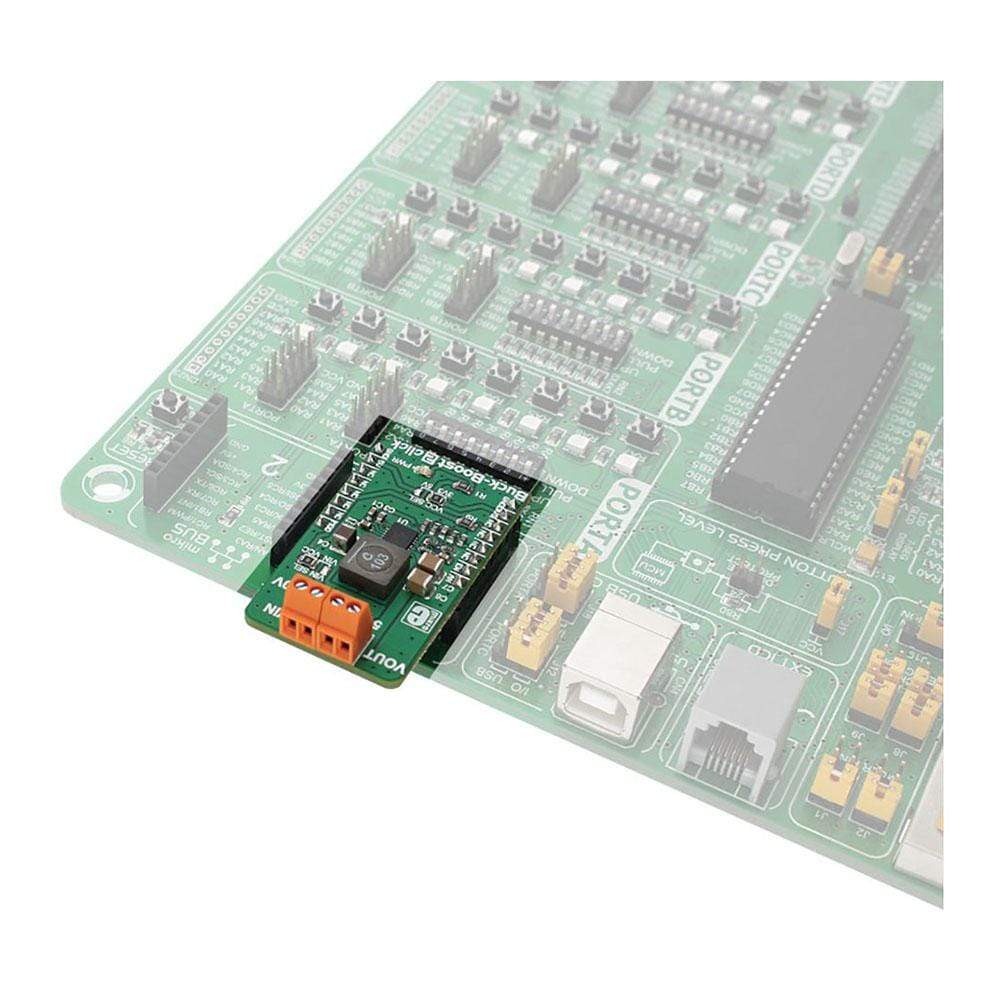
Overview
The Buck-Boost 2 Click Board™ is an advanced DC-DC step-down/step-up regulator (buck/boost), which is able to provide regulated 5V on its output, regardless of the input voltage. The input voltage can range from 2.7V up to 40V.
The Buck-Boost 2 Click Board™ provides ultra-low noise and ripple-free regulated output, with transparent switching from buck to boost mode - depending on the input voltage, which produces no discontinuities or switching artefacts, such as transients or sub-harmonic switching. Selectable switching mode allows optimal power consumption and high power efficiency, for both lighter and heavier loads.
Downloads
Das Buck-Boost 2 Click Board™ ist ein fortschrittlicher DC-DC-Abwärts-/Aufwärtsregler (Buck/Boost), der unabhängig von der Eingangsspannung geregelte 5 V an seinem Ausgang bereitstellen kann. Die Eingangsspannung kann zwischen 2,7 V und 40 V liegen.
Das Buck-Boost 2 Click Board™ bietet extrem rauscharmen und welligkeitsfreien geregelten Ausgang mit transparentem Umschalten vom Abwärts- in den Aufwärtsmodus – abhängig von der Eingangsspannung, wodurch keine Diskontinuitäten oder Schaltartefakte wie Transienten oder subharmonisches Schalten entstehen. Der wählbare Schaltmodus ermöglicht optimalen Stromverbrauch und hohe Energieeffizienz sowohl bei leichteren als auch bei schwereren Lasten.
| General Information | |
|---|---|
Part Number (SKU) |
MIKROE-2963
|
Manufacturer |
|
| Physical and Mechanical | |
Weight |
0.021 kg
|
| Other | |
Country of Origin |
|
HS Code Customs Tariff code
|
|
EAN |
8606018712670
|
Warranty |
|
Frequently Asked Questions
Have a Question?
Be the first to ask a question about this.





